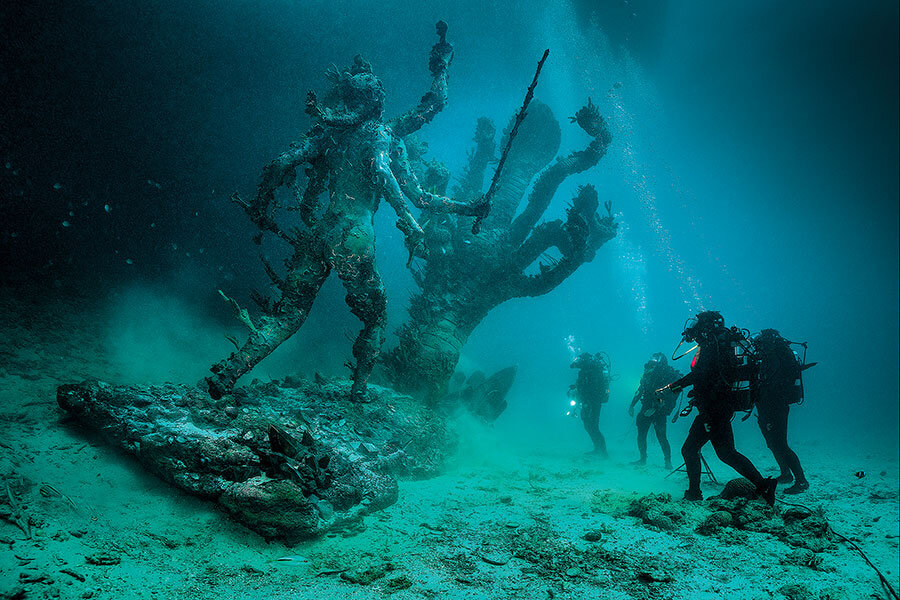Damien Hirst returns with art exploring mythology
| Venice
Damien Hirst’s first major exhibition in 10 years begins not in the gallery but on the page, with the tale of a shipwreck supposedly discovered off the coast of East Africa.
The ship’s contents are said to be the treasures of Cif Amotan II, a freed slave from Antioch, who spent his final days collecting artifacts of distant cultures. The freedman’s plunders were recovered by divers and brought to Venice – or so the story goes.
In the lobby of the Punta della Dogana, visitors see “footage” of divers excavating the treasures.
“A number of the sculptures are exhibited prior to undergoing restoration, heavily encrusted in corals and other marine life, at times rendering their forms virtually unrecognizable,” the exhibition guidebook explains.
Indeed barnacles, sea fans, and myriad coral stud and enshroud bronze deities, triumphant warriors, and even an occasional Walt Disney character.
The result is a menagerie that bridges land and sea, antiquity and modern life, the familiar and the foreign. In one particularly striking display, distant cultures mingle, as the Hindu goddess Kali faces off with Hydra, the many-headed serpent of Greek mythology.
In total, the “Treasures from the Wreck of the Unbelievable” exhibition fills two of Venice’s palatial museums, with 189 sculptures ranging from delicate Roman coinage to a decapitated bronze demon rising three stories through the Palazzo Grassi courtyard.
Mr. Hirst created each piece in triplicate, a “coral” edition, a “treasure” edition, and a “copy” edition, in keeping with the mythos. Many have reportedly sold, with prices beginning at $500,000.
In decades past, the British artist has drawn both acclaim and condemnation. His diamond-crusted infant skull infuriated parenting groups and his kaleidoscopic images made of butterflies enraged animal welfare activists. This show has also sparked controversy, with some raising concerns of cultural and artistic appropriation.
But for many Hirst fans, the borrowing and melding of cultures – and the debate that it invites – is simply part of the show.









